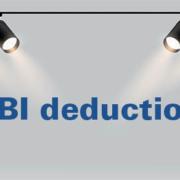The new law includes favorable changes for depreciating eligible assets
The One Big Beautiful Bill Act (OBBBA) includes a number of beneficial changes that will help small business taxpayers. Perhaps the biggest and best changes are liberalized rules for depreciating business assets. Here’s what you need to know.
100% bonus depreciation is back
The new law permanently restores 100% first-year depreciation for eligible assets acquired and placed in service after January 19, 2025. The last time 100% bonus depreciation was allowed for eligible assets was in 2022. The deduction percentage was generally reduced to 80% for 2023, 60% for 2024, and 40% for eligible assets placed in service between January 1, 2025, and January 19, 2025.
For certain assets with longer production periods, these percentage cutbacks were delayed by one year. For example, a 60% first-year bonus depreciation rate applies to long-production-period property placed in service between January 1, 2025, and January 19, 2025.
Eligible assets include most depreciable personal property such as equipment, computer hardware and peripherals, commercially available software and certain vehicles. First-year bonus depreciation can also be claimed for real estate qualified improvement property (QIP). This is defined as an improvement to an interior portion of a non-residential building placed in service after the building was initially put into use. However, expenditures attributable to the enlargement of a building, elevators or escalators, or the internal structural framework of a building don’t count as QIP. They usually must be depreciated over 39 years.
Section 179 first-year depreciation
For eligible assets placed in service in tax years beginning in 2025, the OBBBA increases the maximum amount that can immediately be written off via first-year depreciation (sometimes called expensing) to $2.5 million. This is up from $1.25 million for 2025 before the new law.
A phase-out rule reduces the maximum Sec. 179 deduction if, during the year, you place in service eligible assets in excess of $4 million. This is up from $3.13 million for 2025 before OBBBA was enacted. These increased OBBBA amounts will be adjusted annually for inflation for tax years beginning in 2026.
Eligible assets include the same items that are eligible for bonus depreciation. Sec. 179 deductions can also be claimed for real estate QIP (defined earlier), up to the maximum annual allowance. In addition, Sec. 179 deductions are also allowed for roofs, HVAC equipment, fire protection and alarm systems, and security systems for non-residential real property. Finally, Sec. 179 write-offs can be claimed for depreciable personal property used predominantly in connection with furnishing lodging.
There’s a special limit on Sec. 179 deductions for heavy SUVs used over 50% for business. This means vehicles with gross vehicle weight ratings between 6,001 and 14,000 pounds. For tax years beginning in 2025, the maximum Sec. 179 deduction for a heavy SUV is $31,300.
Strategy: Sec. 179 deductions are subject to a number of limitations that don’t apply to first-year bonus depreciation. In particular, things can get complicated if you operate your business as a partnership, LLC treated as a partnership for tax purposes or an S corporation. The conventional wisdom is to claim 100% first-year bonus depreciation to the extent allowed rather than claiming Sec. 179 deductions for the same assets.
First-year depreciation for qualified production property
The OBBBA allows additional 100% first-year depreciation for qualified production property (QPP) in the year it’s placed in service. QPP is non-residential real estate, such as a building, that’s used as an integral part of a qualified production activity, such as the manufacturing, production, or refining of tangible personal property. Before the new law, non-residential buildings generally had to be depreciated over 39 years.
QPP doesn’t include any part of non-residential real property that’s used for offices, administrative services, lodging, parking, sales or research activities, software development, engineering activities and other functions unrelated to the manufacturing, production or refining of tangible personal property.
The favorable new 100% first-year depreciation deal is available for QPP when the construction begins after January 19, 2025, and before 2029. The property must be placed in service in the U.S. or a U.S. possession before 2031.
Take another look
These are only some of the business provisions in the new law. We can help you take advantage of tax breaks that are beneficial in your situation for 2025 and future years.
© 2025












